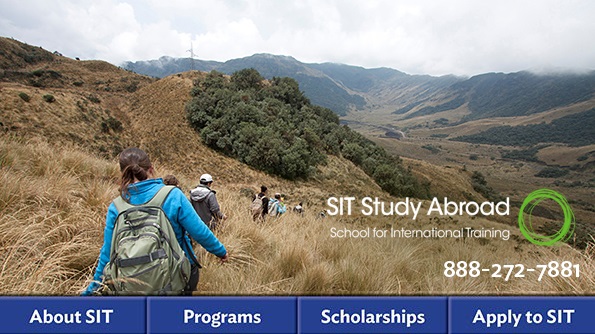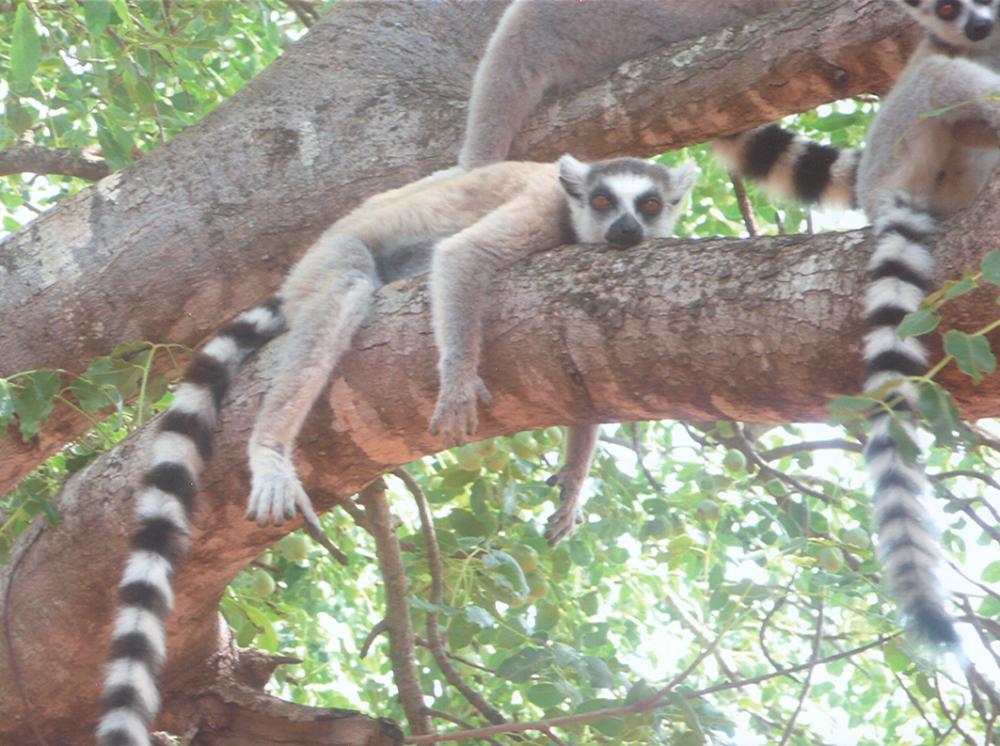Explore rainforests, mangroves, coral reefs, and the environmental challenges of Madagascar, isolated from neighboring land masses for more than 100 million years.
WHY STUDY BIODIVERSITY IN MADAGASCAR?
A biodiverse island evolving from a set of unique environmental circumstances, Madagascar is one of the world’s globally recognized “megadiverse” countries, with flora and fauna found nowhere else on earth. Explore environmental challenges, conservation, and development across an array of ecosystems including tropical rainforests, mangroves, and dry deciduous forests in multiple economic and cultural contexts. Discover a world apart, where the vast majority of wildlife is endemic only to the island and witness the human side of natural resource management. Study alongside Malagasy university students, employing social and natural science field techniques in coral reef systems, national parks, and farming and fishing villages. Stay with local families, learn the Malagasy language, and enhance your French as you become immersed in francophone Africa. Visit the Ankanin’ny Nofy Reserve, where you can see the iconic aye aye and the carnivorous plant Nepenthes. See the amazing Sarodrano cave, a basin filled with clear, blue fresh water, under a rocky overhang as well as the beautiful canyon of Isalo National Park.
Please visit the SIT Study Abroad website for details on the program highlights and details of coursework, educational excursions, and housing.
MONEY MATTERS
SIT is an all-inclusively priced study abroad program – including academic costs, excursions, accommodations and meals, airport transfers, and health insurance. Be sure to discuss how study abroad costs are handled at your school with your study abroad advisor and read the website for more specific information.
SCHOLARSHIPS
SIT has awarded an average of over $1.3 million in scholarships and grants to SIT Study Abroad students in the past three years. All scholarships and grants are need-based. Awards generally range from $500 to $5,000.
CONTACT SIT STUDY ABROAD
· Visit our website: studyabroad.sit.edu
· Request more information or email us:studyabroad@sit.edu
· Call an admissions counselor: 888-272-7881
· Contact a former student.
· Apply to SIT
Read more about our admissions process here.

Major Topics of Study
- Ethnobotany
- Marine studies
- Lemur ecology
- Biodiversity in Madagascar
- Environmental challenges and conservation and development strategies in Madagascar
- Human pressures — including mining and economic development, deforestation and land use, and ecotourism — placed on the country’s ecosystems.
Please visit the SIT Study Abroad website for details on the program courses (including syllabi), educational excursions, and housing.
Program Structure
There is no "typical day"on an SIT program. Activities may take place on any day of the week and at any time of day to be in accordance with according to local norms and to take advantage of once-in-a-lifetime learning opportunities. Thus, the schedule and structure of the program are likely very different from what students are used to on their home campuses. The semester progresses in phases:
- The program begins with a thorough orientation.
- During the first two and a half months of the program, students are engaged in foundational coursework, including:
- thematic seminars, including education excursions,
- language instruction focused on improving practical communication skills, and
- a field research methods and ethics course that prepares students to conduct independent research.
- For the last month of the program, students conduct an Independent Study Project (ISP) on an approved topic of their choosing.
- Finally, students present their project, participate in program evaluations, and prepare to return home.
What Makes SIT Unique
- SIT Study Abroad offers a field-based, experiential approach to learning.
- Each program has a small group of students (typically 10–35).
- On an SIT program, students gain high levels of access to many different stakeholders and experts relevant to the issues the program is examining.
- While some learning will be conducted at the SIT program center, extensive learning is done outside the classroom — in host communities, field stations, NGO headquarters, ecological sites, health clinics, and art studios.
- Many students go on to use their Independent Study Projects as a basis for senior theses on their home campuses. Others use their undergraduate research and overall study abroad experience to successfully apply for fellowships such as Fulbrights and Watsons.
Money Matters
Be sure to discuss how study abroad costs are handled at your school with your study abroad advisor.
SIT tuition and room and board fees include the following:
- All educational costs, including educational excursions
- All accommodations and meals for the full program duration
- Transportation to and from the airport, and on all educational excursions
- Health and accident insurance
Scholarships:
- SIT awards nearly $1.3 million in scholarships and grants annually.
- All scholarships and grants are need-based.
- Awards generally range from $500 to $5,000.
- The SIT Pell Grant Match provides matching grants to all students receiving Federal Pell Grant funding when it is applied to an SIT Study Abroad semester program.
- Contact the financial aid and/or study abroad office(s) at your college or university to learn if your school’s scholarships and grants and federal and state aid programs can be applied to an SIT Study Abroad program.
Contact SIT Study Abroad